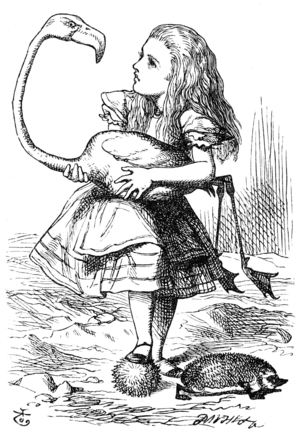Fiction facts for kids

Fiction is any story that an author completely makes up. It comes from the author's imagination. This means it's not strictly based on real history or facts.
The opposite of fiction is non-fiction. Non-fiction writing deals with true events and facts. In a library, you'll often find fiction books in one section and non-fiction books in another.
The word fiction comes from the Latin word fictum. This word means "created" or "made up." So, if a story has been created or invented by someone, it's fiction! Fiction can be written down, told aloud, or even acted out. You can see fiction in movies, TV shows, and plays. The main goal of fiction is usually to entertain you.
However, the line between fiction and non-fiction can sometimes be blurry. For example, historical fiction uses real people or events from history. But the story itself is made up. This type of fiction helps us imagine what life was like in the past. It can also help us understand important ideas about the real world.
Contents
What Makes a Fictional Story?
Characters in Fiction
Every fictional story has characters. These are the people, animals, or creatures in the story. There's usually a main character, called the protagonist. This is often the hero of the story. Sometimes, a group of people can be the protagonist. You usually want the protagonist to succeed.
The protagonist often faces an enemy. This enemy is usually another character called the antagonist. The struggle or challenge between the protagonist and the antagonist is called the conflict.
The Story's Plot
The plot is the series of events that make up a story. It's how everything that happens connects together. These events might follow a pattern. They could happen in a certain order, with one event causing the next. Or they might just happen by chance.
How Plots Are Structured
A writer named Gustav Freytag thought of a plot as having five main parts. He called this "Freytag's pyramid." Think of it like the five acts of a play:
- Exposition: This is the beginning. You learn about the characters and the setting.
- Rising Action: The story starts to get exciting. Problems and challenges appear. The conflict builds up.
- Climax: This is the most exciting and intense part of the story. It's the turning point.
- Falling Action: The story starts to calm down after the climax. Loose ends are tied up.
- Resolution: This is the end of the story. The main conflict is usually solved.
The Climax of a Story
The climax is the most dangerous or exciting part of the plot. Imagine riding a rollercoaster. The highest point, just before the big drop, would be the climax!
The climax usually happens near the end of the story. This is because everything in the story has been building up to it. In an action story, the climax is often when the hero seems to be in the most danger. It's the moment when it looks like they might lose.
Conflict in Stories
Conflict is super important in fiction. Every good story needs a conflict, or a problem to solve. There are several basic types of conflict. A newer type, "Person vs. Technology," is also common today.
Person vs. Self
This conflict happens when a character faces their own fears or confusion. They might struggle with what's right or wrong. Sometimes, the character tries to figure out who they are. Even though the struggle is inside the character, outside things can still affect them. This type of conflict is about a person trying to make a tough decision.
Person vs. Person
This is when the hero fights against another person. They might meet their enemy more than once. For example, if a child is being bullied, that's a person vs. person conflict. A famous example is the fight between Judah and Messala in the movie Ben-Hur.
Person vs. Society
In this conflict, the hero fights against the rules or ideas of their society. The main character is battling what they see as wrong with the world they live in. Society itself can feel like a single character in this type of story. An example is Wuthering Heights by Emily Brontë.
Person vs. Nature
This conflict is when a character struggles against natural forces. Many movies show this theme. You also find it in stories about surviving in wild places. An example is Jack London's short story To Build a Fire.
Person vs. Supernatural
This happens when a character battles supernatural forces. Sometimes, this force is inside the character. Stories like Dracula by Bram Stoker and Frankenstein by Mary Shelley are good examples. It's also very common in comic books.
Person vs. Machine/Technology
This conflict puts a character against robots or machines with artificial intelligence. The movies I, Robot and the Terminator series are great examples of this type of conflict.
See also
 In Spanish: Ficción para niños
In Spanish: Ficción para niños


